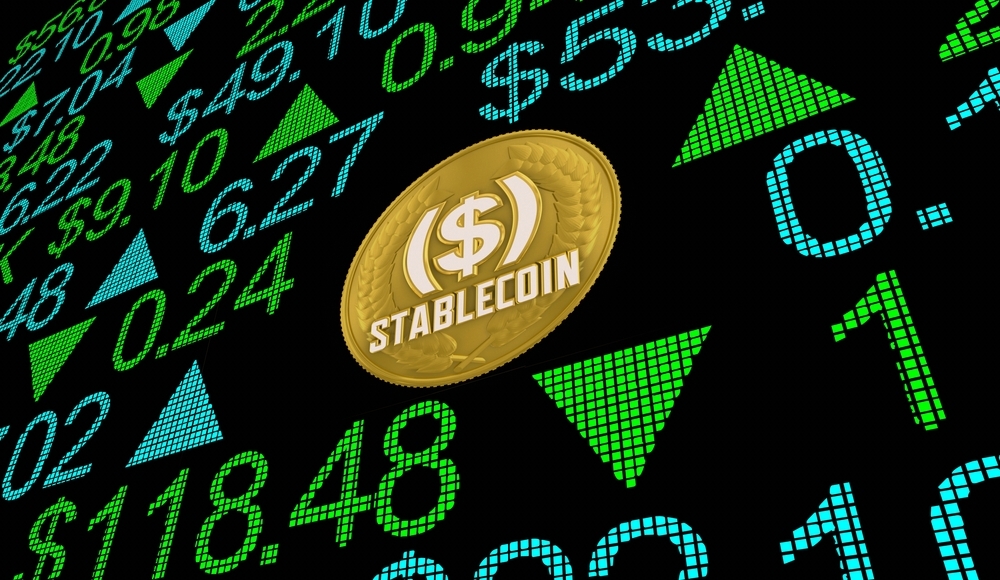A Closer Look at the Stablecoin Industry in 2023
The stablecoin industry's growth and versatility in 2022 and 2023 highlight its substantial impact and potential on the financial sector, a report reveals.


In the crypto space, the significance of stablecoins is often overlooked. However, the industry is far more expansive and dynamic than you might think.
Recent data from a report by Brevan Howard Digital, authored by Johnson and Nimmagadda, highlights the impressive growth of stablecoins and how they compare with traditional means of digital payment.
According to the report, stablecoins facilitated over $11 trillion in transactions on blockchain networks in 2022, surpassing the value of transactions settled by the established PayPal and comparable to that of Visa.
At present, more than 25 million blockchain addresses possess at least $1 in stablecoins, with 80% of them holding between $1 and $100. The prevalence of smaller-dollar holdings implies that there’s potential for the stablecoin industry to extend financial services to those underserved by traditional institutions.

Stablecoins have also proven their resilience amidst the crypto bear market. Despite a decline in stablecoin transactions alongside the broader crypto market at the end of 2022, the report underscores their durability.
While stablecoin market capitalisation dropped around 24% from its peak, this decline was notably less severe compared to other cryptocurrencies.
New to stablecoins? Read our guide on stablecoins.
Stablecoins not for speculative trading
Stablecoins have traditionally been linked to trading and investment. However, the Brevan Howard Digital report offers a unique perspective by examining stablecoins used for purposes other than speculation.
The analysis reveals that stablecoin usage shows a limited correlation with crypto exchange volumes. This suggests a significant portion of stablecoin transactions originate from non-trading activities.
Centralised exchange volumes have fallen by 64% and decentralised exchange volumes by 60% since December 2021.
Notably, the stablecoins under study are not the same ones locked inside smart contract accounts on decentralised exchanges.

The report highlights a crucial point: the majority of stablecoin holdings are found in externally owned accounts.
This indicates that a significant proportion of these holdings serve non-speculative purposes. This insight prompts speculation about stablecoins’ potential in remittances, payments, and other financial activities beyond trading.
Stablecoins in the industry are competing hard
In politically and economically stable nations, stablecoins might seem like a luxury rather than a necessity.
Not all stablecoin projects contribute to the global transfer volume of stablecoins. This is particularly true if a nation’s banking sector continuously innovates to keep users from adopting stablecoins.

Consider PayPal’s PYUSD stablecoin, which has faced some adoption challenges after its launch three weeks prior. Blockchain analytics firm Nansen reports that roughly 90% of PYUSD is held by Paxos Trust, with crypto exchange wallets holding nearly 7%. This indicates a negligible adoption rate.
The report implies that “smart money” investors haven’t shown much interest. Despite high expectations in the crypto industry, PYUSD’s actual use and presence in self-custody wallets remain limited in the initial weeks.
PYUSD has been in circulation for less than three weeks. Pegged to the U.S. dollar, the stablecoin was built on the Ethereum network and is fully backed by dollar deposits, short-term Treasury bonds, and similar cash equivalents.
Massive adoption of stablecoins in Latin America
On the contrary, in emerging economies with volatile domestic currencies and limited access to savings and investments, stablecoins have gained so much traction. For instance, Tether has made strides in Argentina, whose people are battling a 100% inflation rate.
Similarly, in Venezuela, stablecoins have become an alternative to the struggling domestic currency. In 2022, a significant 34% of small retail transaction volume in the country involved stablecoin exchanges. While Latin American consumers adopt dollar-pegged stablecoins as an inflation hedge, everyday transactions mostly still rely on local currencies.
Stablecoins pegged to local currencies are emerging across Latin America, offering innovative cross-border money transfer experiences. Players like Num Finance, an Argentine FinTech startup founded in 2021, focus on introducing local stablecoins and deploying crypto payment technologies in emerging markets.
Num introduced its first stablecoin, nARS, in April of this year, pegged to the Argentine peso and backed by a blend of crypto and fiat currencies. Building on this, the company released stablecoins tied to the Peruvian sol (nPEN) and the Colombian peso (nCOP). The latter recently entered the market.
These innovations also hold potential for cross-border remittances. As remittance flows into Latin America and the Caribbean reach $145 billion in 2022, the cost of traditional international money transfers will remain high. The World Bank reports that transfers from the U.S. to Latin America will cost, on average, 5.8% of the total transfer volume in transaction fees.
Tron’s stablecoin dominance
Meanwhile, in terms of which blockchain stands out for its stablecoin activity, we have the Tron network. Accounting for 49% of weekly active addresses, 37% of transactions, and 35% of stablecoin volumes,
Tron’s appeal lies in low transaction fees, fast speeds, support for multiple stablecoins, a thriving DeFi ecosystem, and strong community backing. Not to mention, Tron’s quick transaction speed suits stablecoin trading, enabling swift buying and selling without prolonged confirmation times.
Considering the current bear market climate, Tron’s stablecoin market capitalization surged regardless by over 8% in March 2023, hitting $40 billion, according to DeFillama data.
The network received significant inflows, surpassing $1 billion on March 12 and $917.49 million on March 17. Tether USDT holds a dominant 94.36% of total stablecoins on Tron.
Tron-based algorithmic stablecoin USDD stands as the third prominent stablecoin on the network, with a market cap of $534.01 million after a 5% increase in the last month.
Another contender to USDT, the top stablecoin on the network, TrueUSD (TUSD) expanded its supply by 118% to $1.31 billion, making it the second-largest stablecoin on the network.
The takeaways
The stablecoin industry’s growth and versatility in 2023 highlight its substantial impact on the financial sector. The Brevan Howard Digital report reveals how they surpassed the value of transactions settled compared to established payment platforms last year.
Their resilience during market fluctuations sets them apart from other cryptocurrencies. The report emphasises stablecoins’ broader use beyond speculation, with implications for remittances and payments, especially in volatile economies.
Further reading: Expand your crypto knowledge in our learning hub.
Share to
Stay curious and informed
Your info will be handled according to our Privacy Policy.
Make sure to follow our Twitter, Instagram, and YouTube channel to stay up-to-date with Easy Crypto!
Also, don’t forget to subscribe to our monthly newsletter to have the latest crypto insights, news, and updates delivered to our inbox.
Disclaimer: Information is current as at the date of publication. This is general information only and is not intended to be advice. Crypto is volatile, carries risk and the value can go up and down. Past performance is not an indicator of future returns. Please do your own research.
Last updated September 3, 2023





